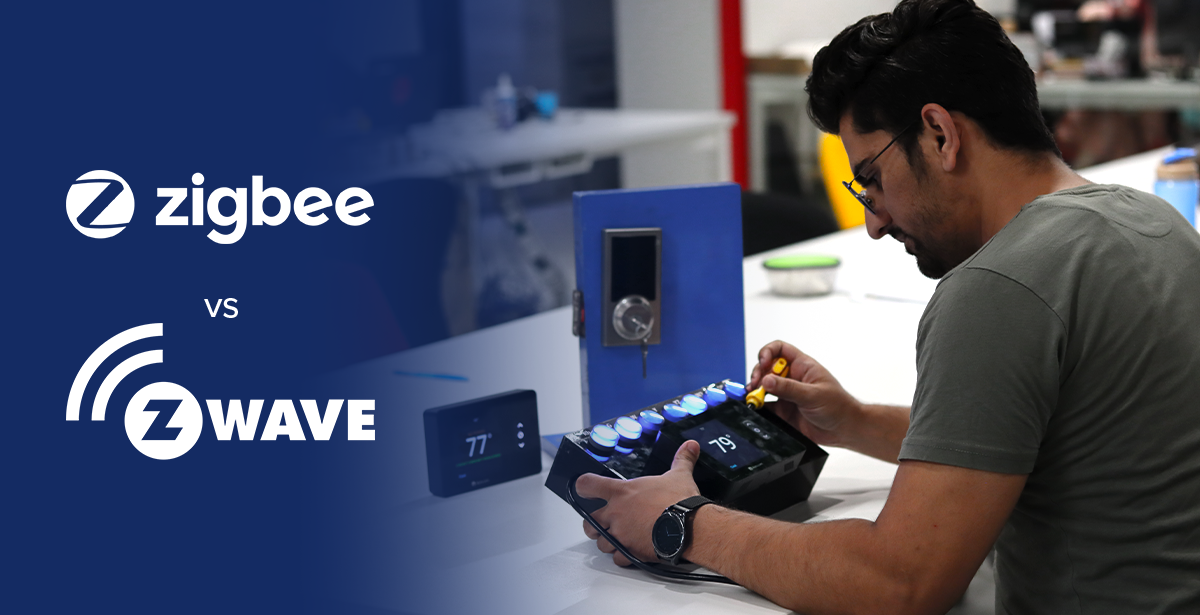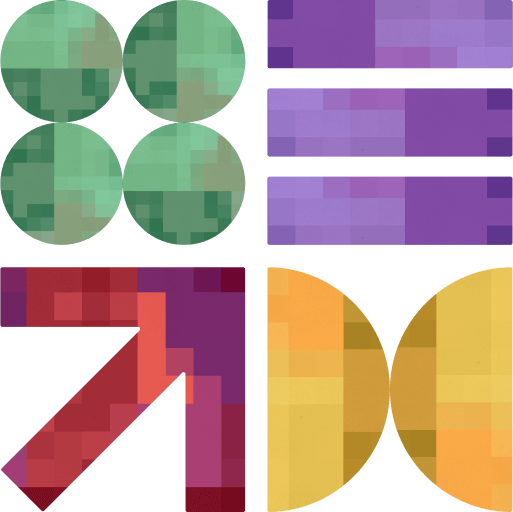Smart Home IoT Development – Zigbee vs Z-Wave

One of the important aspects of IoT development for smart home gadgets is connectivity. Without this, devices won’t be effectively in sync with one another.
Two wireless standards that can help developers pull this off are Zigbee and Z-Wave. Both of these are mesh networks that are designed for home automation.
In this Zigbee vs Z-Wave debate, however, one of these may be the more suitable option for your upcoming smart home projects.
But First, What Is Zigbee?
Before getting to the technical aspects of Zigbee vs Z-Wave, let’s address the elephant in the room – that name.
The Zigbee standard got its name from the “dance” honeybees use to communicate with one another. This makes sense considering how it’s used to share messages with Zigbee products on the same network.
Zigbee is a wireless technology that’s based on the Institute of Electrical and Electronics Engineers (IEEE) Standards Association’s 802.12 specification. If you recognize this number, it’s because Wi-Fi implements several versions of this specification.
Yet, unlike Wi-Fi, Zigbee transmits only smaller amounts of data. To be more specific, it has a data transfer rate of 250 kilobits per second. This is more than sufficient for data like instructions on how to behave.
Another important aspect to know is that Zigbee operates on the 2.4GHz, 90MHz and 868 MHz frequencies. Devices on the 2.4 GHz spectrum, however, may be susceptible to interference in high Wi-Fi traffic.
All of these specifications are maintained and updated by the Connectivity Standards Alliance (formerly Zigbee Alliance).
Established in 2002, this non-profit has companies producing Zigbee products on board. Examples include Apple, Amazon, and Google.
Next, What Is Z-Wave?
The other standard used for smart home IoT development is Z-Wave.
This standard operates in the 800-900 MHz frequency range, allowing it to avoid interference from Wi-Fi devices. It too carries only small pieces of data to around 300 ft. in open air.
However, signals only travel the distance between one device and the next. They’re then repeated and sent on their way to the next device.
A single network can contain up to 232 devices/nodes. This number is very small in comparison with the 65,000 nodes in a Zigbee network. However, it’s quite suitable for smart homes.
Technical aspects aside, Z-Wave was rolled out in 2001 by the Danish company Zensys. It exchanged hands several times until it finally became the property of Silicon Labs in 2018.
Since it’s owned by a single company, Z-Wave remains a standard. It hasn’t been broken into different protocols like Zigbee.
Moreover, until the release of Zigbee 3.0, devices with different protocols couldn’t communicate with one another.
Despite these apparent limitations, Z-Wave is used in over 100 million devices worldwide. This is 70% of the smart home market according to the Z-Wave Alliance.
Smart home IoT development experts may also rejoice knowing that the Z-Wave Alliance announced the Z-Wave Specification. This protocol will allow the technology to be used by all tech firms and component manufacturers.
Zigbee vs Z-Wave – Which Is Best for Your Project?
Now you may be curious about which of these best suits your home automation IoT development project. To help you make up your mind, here’s a quick comparison of both.
Network Configuration
Both Zigbee and Z-Wave are mesh networks. This means each device operates as a repeater and passes the signal on to another device.
Whereas Zigbee isn’t limited to a specific number of hops, Z-Wave supports four hops max between the controller and destination device.
Moreover, as you already know, Z-Wave networks can have up to 232 devices connected to it. Meanwhile, Zigbee offers to connect up to 65,000 devices.
However, there’s a chance you may experience bandwidth problems before getting close to that number.
Besides, the 232 devices cap is sufficient for most households. Otherwise, you can opt for the newer Z-Wave Long Range (LR). This upgrade increases the scalability on a network to over 2,000 nodes.
Security
Both Zigbee and Z-Wave use AES-128 symmetric encryption. They also claim they’re safe and secure from hackers.
While it’s best to do your own due diligence, it’s comforting knowing both standards have a robust approach.
Power Consumption
Zigbee and Z-Wave require a fraction of the power Wi-Fi needs to operate, making them ideal for smart home devices. In fact, some devices can run on single coin cell batteries for years. Thus, security and power consumption do not help settle the Zigbee vs Z-Wave question.
Interoperability
There’s a perceived lack of interoperability when it comes to Zigbee. This is because of confusion associated with their certification program.
There are two levels of certification – one for hardware and the other for software.
Some devices may get the hardware certified, but not the software. Therefore, they may broadcast the Zigbee signal, but not use the right software. As a result, some ‘Zigbee-ready’ devices may not work with others.
On the other hand, Z-Wave’s interoperability is its selling point. The Z-Wave Alliance ensures that Z-Wave devices comply with strict standards. Therefore, devices can easily plug right into exiting Z-Wave networks.
Signal Range
Operating at a higher frequency reduces signal range. As Zigbee operates at 2.4 GHz and Z-Wave at 908 MHz, the latter has better signal range.
To be more precise, the in-home free space range of Zigbee is estimated at 40 feet. Meanwhile, the Z-Wave signal can travel up to 330 feet in an unobstructed setting.
Signal Reliability
Z-Wave is considered more reliable in this regard. That’s because its frequency isn’t as crowded as the 2.4 GHz band Zigbee uses.
Moreover, Z-Wave devices have more range. Therefore, you won’t be experiencing the usual reliability issues caused by this factor.
Zigbee vs Z-Wave: What’s Preferred for IoT Development
From the above, you probably understand why Z-Wave can be a better option for smart home IoT development purposes. However, that’s not all that makes this standard a good choice.
- Easy Installation – Thanks to Z-Wave’s SmartStart feature, installation is fast and easy.
- Low Cost – Z-Wave technology cuts no corners despite being based on a low-cost chip. Because of this, majority of compatible devices are affordable.
- Continuously Growing Popularity – Z-Wave is quite popular and widely used. It’s also the choice of many renowned brands like Samsung, GE, LG, and Logitech.
Need more information on Zigbee vs Z-Wave for IoT development? Our team will happily guide you to make your next project a success.
Simply fill and send the form below and we’ll get back to you ASAP.




